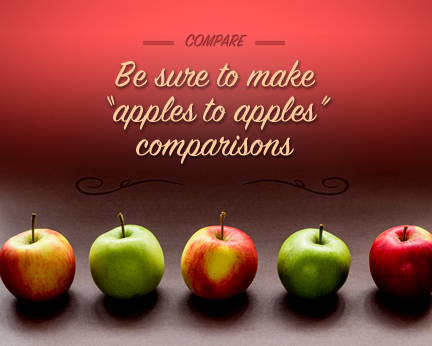Call Don today: 951-533-4966
Blog
Don Welker's Financial Minute

In my last article I discussed how to review your Statement of Cash Flows. Today we’ll look at your Income Statement, also known as your Profit & Loss (P&L) Statement. Then, in the final article in this series, I’ll explain how to evaluate your year-end Balance Sheet.
Of course, these tips apply whether you’re reviewing your own company’s financial statements or you’re looking at another company’s information – such as the financial statements for a customer that has applied for credit.
Comparisons Can Be Very Helpful
A good starting point is to compare the year-end Income Statement to that of the prior year. If you’re reviewing your own company’s financials, you should also compare it to budget.
Here are some of the first things you should look at:
• Is the revenue going up or down?
• Are the gross profit margins increasing, decreasing or flat?
• Are operating expenses moving as you would expect based on the changes in revenue?
• How did actual performance compare with the budget forecast?
Understand What Happened During the Year
Reviewing an Income Statement is not just a matter of seeing if the numbers look “about right” and moving on. You also need to ask questions to understand what happened during that time period. These include:
• What’s driving the change (or lack of change) in gross profit margins?
• If operating expenses are not moving in tandem with revenue, why not? If expenses are rapidly accelerating, what’s driving it? If cost-cutting measures slashed expenses, how are these measures affecting operations?
• Were there any unusual or non-recurring expenses? How would the Income Statement look if you pulled the one-time expenses out of the picture?
Be Sure to Look Forward, Too
Next you want to ask about how the events of the past year will likely impact the company going forward. For example:
• Is it anticipated that the current levels of revenues, operating expenses and gross profits will continue in each of the next four quarters? Why or why not?
• Are the needed credit facilities in place to support operations and/or anticipated growth? As I have discussed in the past, you need to avoid growing yourself out of business."
• How are vendor relations? Are there any potential supply issues that could affect operations?
I also like to ask divisional managers what two things could be changed in company operations to increase bottom-line profit. The answers can be very revealing!

When I meet with small business owners, it often becomes clear that they are mystified by their business’ financial statements. Unfortunately, because they don’t know what to look for when evaluating these essential documents, they miss out on both red flags and opportunities.
This is the first of a 3-part series on how to conduct a review of your year-end financial statements. In future articles I’ll discuss the other two parts of a quality set of financial statements: your Balance Sheet and Income Statement (also known as a “P&L” or Profit & Loss Statement).
Cash is King
Because cash is so important, the Statement of Cash Flows is the first thing you should look at when conducting a year-end financial review. After all, when it comes to running and expanding a business, cash (or, more specifically, cash flow) truly is king.
Your Statement of Cash Flows helps answer some vital questions. Does your organization have enough cash to stay in business? Is it generating more cash than it’s using – or vice versa? Would it qualify for a bank loan? And more.
Start with the Details
Your starting point should be to ask some important questions about the details:
• How was cash generated by and used in operations? For example, have your collections of trade receivables sped up or slowed down?
• How was cash generated by and used in investing activities? For example, did the company buy or sell property and/or equipment?
• How was cash generated by and used in financing activities? Did the company obtain cash through borrowing? Did it use cash to pay down lines of credit or other long-term debt?
Then Look at the Big Picture
Next look at everything as a whole. Identify any non-cash expenses on your Statement of Cash Flows, such as amortization and depreciation. Add these back to your net income to help you get an accurate picture of your actual cash flow.
Compare cash at the beginning of the period to cash at the end of the period to see if your company is generating positive cash flow. Although there are some exceptions to the rule (such as start-up companies that have received an infusion of cash), generally speaking if your company is generating positive cash flow then it is profitable. Which, of course, is what you’re hoping to see.